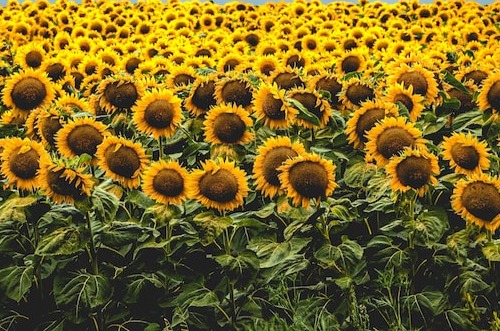W33: Sunflower Update

In W33 in the sunflower oil landscape, the European Union's (EU) sunflower seed production forecast for the 2023/24 season has been lowered to 10.85 million metric tons (mmt), down 650 thousand metric tons (mt) from the Jul-23 estimate, due to lower output in Romania, Spain, and France. However, the Black Sea region's sunflower seed production estimate was increased due to timely rains in Jul-23, which improved yield potential. Ukraine's sunflower production estimate has been raised by 1.1 mmt to 13.5 mmt, surpassing the previous year's 12.2 mmt. Similarly, Russia's sunflower seed production estimate has increased by 1.25 mmt to 17.5 mmt, exceeding the previous year's 16.25 mmt.
Furthermore, in its Aug-23 report, the United States Department of Agriculture (USDA) raised its forecast for Russia's sunflower oil exports in 2023/24 to 4.16 mmt, slightly higher than Jul-23's forecast of 4.10 mmt and up from the previous year's production of 3.91 mmt. This increase is driven by the availability of growing sunflower seed supplies. Additionally, Ukraine's sunflower oil exports are forecast to reach 4.95 mmt, an increase of 200 thousand mt and slightly surpassing last year's 4.85 mmt.
Sunflower oil prices have significantly decreased both globally and in Bulgaria. After reaching USD 2,350/mt on the Rotterdam exchange in Mar-22, sunflower oil prices have plummeted by 58% to USD 980/mt due to the Ukrainian conflict. In Bulgaria, retail prices that were near USD 3.34/liter in 2022 now average USD 2.16/liter. Oil producers reveal that many farmers are holding onto their sunflower crops in hopes of higher prices. Import bans from Ukraine and export taxes imposed by other major sunflower-producing nations reduced operational capacity for Bulgarian enterprises.
The cultivation of sunflowers and the marketing of grains remain niche industries in Lower Saxony, Germany. About a year ago, sunflowers gained popularity because Ukraine stopped being a global producer, causing supply chain disruptions. Although these supply chain issues have been resolved, grain exports continue to pose challenges. Despite this, Ukraine remains as the world's largest sunflower raw material producer. In Germany, the sunflower trend is waning; sunflower cultivation in Lower Saxony has decreased from 2,762 hectares (ha) in 2022 to 2,421 ha currently. The decline is attributed to challenges in marketing the harvested grains, leading to diminishing enthusiasm for sunflower cultivation.
Lastly, in Jul-23, India set a new record by importing 1.76 mmt of edible oils, driven by uncertainties surrounding shipments from the Black Sea region. Particularly, the import of sunflower oil saw a substantial 71% month-on-month (MoM) increase, reaching 327.26 thousand mt.



